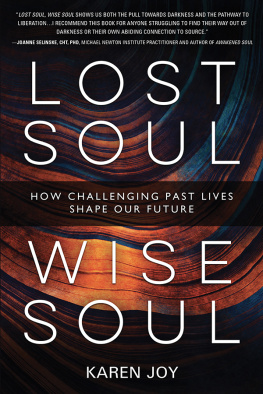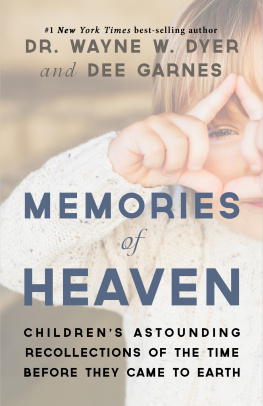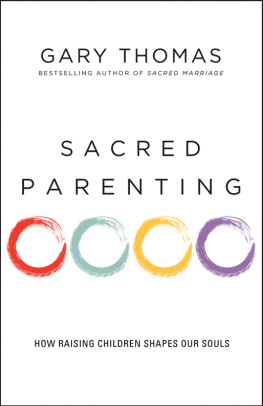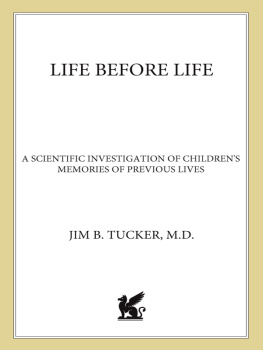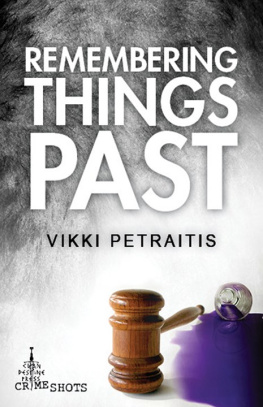Praise for Old Souls
Fascinating This is science. Shroder brings it alive for the reader by emphasizing the human interest of the childrens stories and memories themselves. This book explodes the worldview we know and demands that we enlarge our perspective.
Claire Douglas, The Washington Post
A book worth reading, if only for the many unsettling questions it will raise.
Patti Thorn, Rocky Mountain News
Whether or not you believe, but especially if youre a born skeptic, youll be in good company sharing the travels of author Tom Shroder. Old Souls is quietly mind-boggling.
Chicago Tribune
The journalistic objectivity Shroder brings to his material makes this an exceptionally valuable treatment of an often disparaged subject.
Publishers Weekly
Shroder, whose journalistic background makes him a cleared-eyed observer and brilliant reporter of his surroundings, provides unforgettable descriptions. While true believers will find much here to buttress their notions about the immortality of the human soul, skeptics will enjoy watching a trained scientist in his careful explorations of the inexplicable.
Kirkus Reviews
Tom Shroder has written a fantastic and unnerving documentation of his investigation of the work of psychiatrist Ian Stevenson, who has devoted decades to the study of thousands of children who seem to remember details of previous lives. Old Souls is a fascinating account of Shroders travels with Stevenson through Lebanon, India, and Virginia in search of verification of the continuity of human conciousness beyond death.
New York Press
Tom Shroder uses a journalists craft and style to make this nonfiction book come alive. He has written about Stevensons findings in a way that will surprise believers and skeptics alike.
Florida Times-Union


For Lisa

SIMON & SCHUSTER PAPERBACKS
Rockefeller Center
1230 Avenue of the Americas
New York, NY 10020
www.SimonandSchuster.com
Copyright 1999 by Tom Shroder
All rights reserved, including the right of reproduction
in whole or in part in any form.
SIMON & SCHUSTER PAPERBACKS and colophon are
registered trademarks of Simon & Schuster, Inc.
Designed by DEIRDRE C. AMTHOR
Manufactured in the United States of America
The Library of Congress has cataloged the hardcover edition as follows:
Shroder, Tom.
Old souls : the scientific evidence for past lives / Tom Shroder.
p. cm.
Includes bibliographical references.
1. ReincarnationCase studies. 2. Memory in childrenMiscellaneous. I. Title.
BL515.S46 1999 99-12705
133.90135DC21 CIP
ISBN-13: 978-0-684-85192-1
ISBN-10: 0-684-85192-X
ISBN-13: 978-0-684-85193-8 (Pbk)
ISBN-10: 0-684-85193-8 (Pbk)
eISBN: 978-0-743-21892-4
There are more things in heaven and earth, Horatio,
Than are dreamt of in your philosophy.
Shakespeare, Hamlet, act 1, scene 5

Contents
PART I:

Prologue
Children Who Remember Previous Lives

The Question
It is late, nearly lightless. Smoke from a million dung fires hangs in the headlights as the Maruti microbus bangs along the narrow, cratered hardpack that passes for a paved road in the Indian outback. We are still hours away from the hotel, an island of First World comfort in this simmering Third World ocean, and the possibility that we will never get there looms as large as the oncoming truck, absurdly overloaded and undermaintained, shuddering violently as it hurtles toward us dead in the middle of the road. Using every inch of the rutted dirt shoulder, we barely escape. Through the thin tin of the Maruti, I can feel the truck vibrate, smell death in the exhaust pumping from its tailpipe. In escape, there is no relief. We bounce back onto the roads pitted surface and immediately overtake a wooden cart lumbering to the heavy gait of yoked oxen with immense horns. Our driver leans on his horn as he swerves around the cart into a blind curve that I can only pray is not occupied by a bus loaded to the dented metal ceiling with humans and farm animals. I try not to think about the lack of seat belts or the mere half inch of glass and metal that separates the front seat from whatever we plow intoor the Lonely Planet article I read that said fatal accidents were forty times more likely on Indian roads than on American highways. Or the account of a Western traveler who hired a car and driver in northern India, exactly as we have, only to crash head on into a truck, then regain consciousness in agony in a crude hospital, stripped of passport, money belt, and insurance papers. I try not to think about dying ten thousand miles from home, about never seeing my wife and children again, about their lives going on without any trace of me. I try not to think about absolute darkness.
But even within my bubble of fear, I am aware of the irony. Sitting in the backseat, apparently unconcerned about the two-ton mud-splattered torpedoes racing toward us, is a tall, white-haired man, nearly eighty, who insists that he has compiled enough solid, empirical evidence to demonstrate that physical death is not necessarily the end of me or anyone else.
His name is Ian Stevenson, and he is a physician and psychiatrist who has been braving roads like this and worse for thirty-seven years to bring back reports of young children who speak of remembering previous lives and provide detailed and accurate information about people who died before they were born, people they say they once were. While I struggle with my fear of dying, he is wrestling with his own fear of annihilation: that his lifes work will end, largely ignored by his peers.
Why, he asks for the third time since night has fallen, do mainstream scientists refuse to accept the evidence we have for reincarnation?
On this day, and for the past six months, Stevenson has shown me what he means by evidence. He has permitted me to accompany him on field trips, first to the hills surrounding Beirut and now on a wide swath of India. He has responded to my endless questions and even invited me to participate in the interviews that are the heart of his research. The evidence he is referring to does not come from fashionable New Age sources, past-life readings, or hypnotic regressions during which subjects talk about being a Florentine bride in the sixteenth century or a soldier in the Napoleonic Wars, rendering the kind of details one might garner in an hours time paging through a few romance novels. The details Stevensons children recall are far more homely and more specific than those. One remembers being a teenager called Sheila who was hit by a car crossing the road to collect grass for cattle feed, another recalls the life of a young man who died of tuberculosis asking for his brother, a third remembers being a woman waiting for heart surgery in Virginia, trying and failing to call her daughter before the operation she would not survive. It goes on and on: These children supply names of towns and relatives, occupations and relationships, attitudes and emotions that, in hundreds of cases around the world, are unique to a single dead individual, often apparently unknown to their present families. But the fact is, the people the children remember did exist, the memories that the children claim can be checked against real lives and their alleged feats of identification verifiedor contradicted by a variety of witnesses.
Next page

